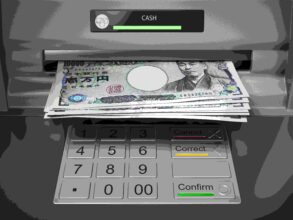
One type of financial transaction particularly impacted by the pandemic is ATM usage, both due to concerns about touchpoints and virus transmission, as well as the economic slowdown driving down cash withdrawals or deposits. ATM industry trade groups and financial firms acted during the pandemic to improve the safety of ATM machines, and ensure they remain available for the millions of consumers that utilize ATMs every day.
Protections put in place by ATM companies and financial institutions include:
•Several companies developed protective screens for ATMs which featured antimicrobial embedded into the screen’s outer layer. Typically built with metal oxides, these screens stand up to the elements and eliminate a high percentage of pathogens on contact.
•Keypad disinfecting technology was developed by several firms that used UV-C lights to safely eradicate viruses and bacteria in between each ATM usage
•Banks, financial institutions, and merchants increased the frequency for ATM cleaning, including guidelines for chemicals with at least 70% isopropyl alcohol content and tips for avoiding recontamination
•Shutting off some ATMs outside of banks that featured multiple rows of machines to establish more than six feet of distance
•Closing in-lobby ATM machines while leaving drive-through and outside machines open
The new types of protective screens and UV-C light treatments bode well for the future of ATM machines, as they are easily implemented, cost effective, and provide long-term protections for users against germs beyond COVID-19. An increased focus on cleaning procedures and frequency will also improve customer sentiment about utilizing ATMs.
During the later stages of the pandemic, studies about transmission rates and infections found person-to-person contact was the main vector, as opposed to touch points such as ATM machines or cash. Various industry groups pushed for the repeal of “cash bans” in some countries, both due to the limited risks posed by cash as well as the reliance poorer “underbanked” and older individuals have for cash. More banks opened up their lobbies and expanded access to ATM machines in time for expanded economic activity.
A New Type of ATM
The start of the pandemic also drove investors towards Bitcoin, as many see it as a stable “store of value” like gold. Buyers purchased Bitcoin through several methods, with many taking advantage of the ease of Bitcoin ATMs, or BTMs. There is a wide availability of BTMs throughout the United States, as companies like Bitcoin Depot (which operates more than 500) are aggressively expanding to match the growing interest in cryptocurrencies. According to Cointelegraph, demand for the number of functioning BTMs is now more than 8,000, a 90% increase compared to 2019. The skyrocketing demand reflects a broader acceptance and interest in Bitcoin as a currency and investment, as well as the recent halving event that adjusted the mining reward for new Bitcoins.
During the early stages of global shutdowns Bitcoin Depot and other BTM operators took steps to deactivate some BTMs in high-risk areas to slow the spread of coronavirus. As the pandemic continued, and worries about touchpoint transmission waned, companies have put these machines back in service to provide users with a flexible and convenient cash alternative. Bitcoin ATMs aid social distancing because they introduce more consumers to virtual cash alternatives, which they can use to purchase products and services online, and thereby reduce their in-person transactions and possible COVID-19 exposures.
This is an article provided by our partners network. It does not reflect the views or opinions of our editorial team and management.
Sponsored content

Founder Dinis Guarda
IntelligentHQ Your New Business Network.
IntelligentHQ is a Business network and an expert source for finance, capital markets and intelligence for thousands of global business professionals, startups, and companies.
We exist at the point of intersection between technology, social media, finance and innovation.
IntelligentHQ leverages innovation and scale of social digital technology, analytics, news, and distribution to create an unparalleled, full digital medium and social business networks spectrum.
IntelligentHQ is working hard, to become a trusted, and indispensable source of business news and analytics, within financial services and its associated supply chains and ecosystems










